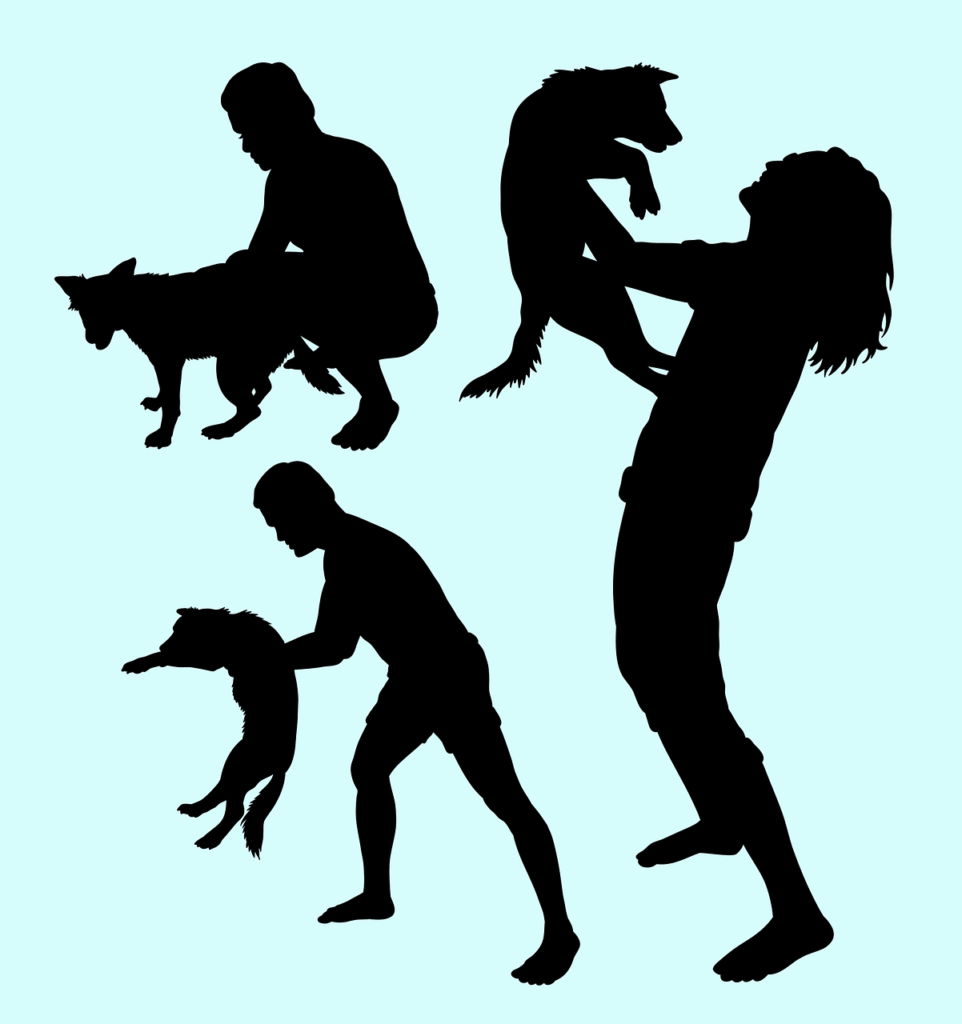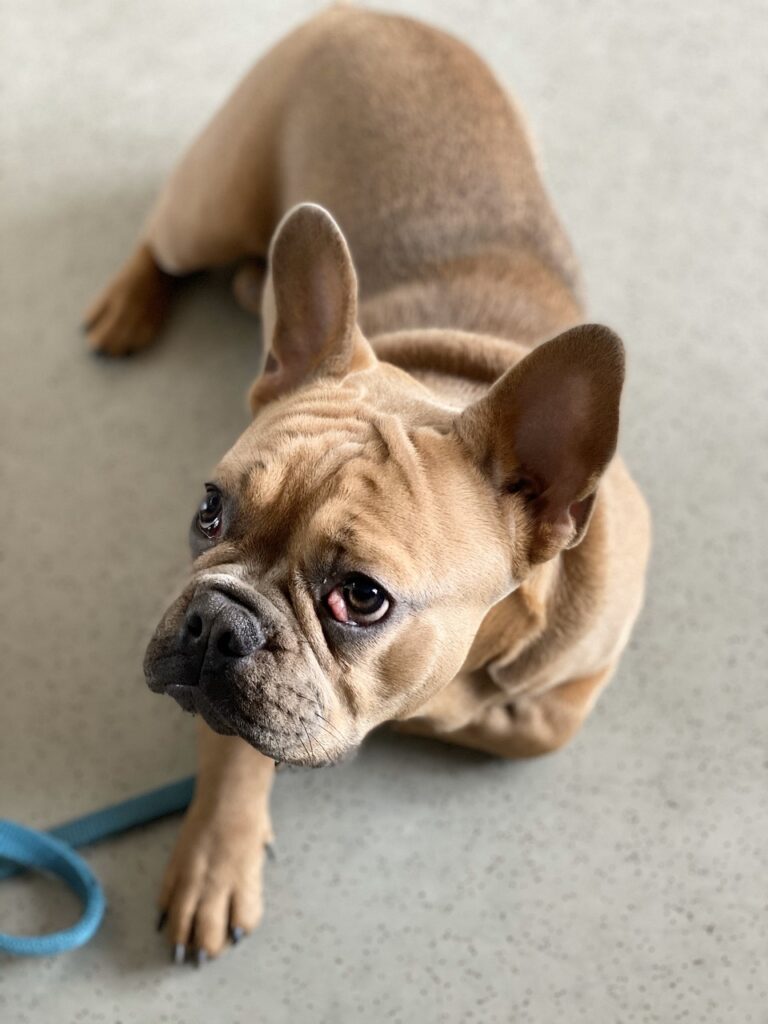
Taking care of your furry companion’s eyes is crucial to ensuring their overall health and well-being. From regular grooming to monitoring their outdoor activities, there are several simple steps you can take to keep your dog’s eyes in pristine condition. Whether it’s wiping away dirt and debris or keeping an eye out for any signs of discomfort or redness, maintaining your dog’s ocular health is easier than you might think. In this article, we will explore some effective strategies and practical tips to help you keep your dog’s eyes healthy, providing them with the crystal-clear vision they deserve.
Routine Eye Exams
Frequency of Eye Exams
Regular eye exams are an essential part of keeping your dog’s eyes healthy. Just like humans, dogs can experience a variety of eye conditions and diseases that can go unnoticed without proper examination. It is recommended to schedule an annual eye exam for your furry friend, especially if they are older or have a history of eye problems. However, if your dog exhibits any unusual symptoms such as redness, discharge, or squinting, it is important to consult a veterinarian ophthalmologist immediately.
Finding a Veterinary Ophthalmologist
When it comes to your dog’s eye health, it’s crucial to seek the expertise of a veterinary ophthalmologist. These specialized veterinarians have advanced training and experience in diagnosing and treating eye conditions in animals. To find a veterinary ophthalmologist near you, you can ask for recommendations from your regular veterinarian or conduct an online search. It’s important to choose a reputable ophthalmologist with positive reviews and a good track record of providing quality care to ensure the best possible outcome for your dog.
Importance of Regular Check-ups
Regular eye exams play a vital role in maintaining your dog’s overall health and wellbeing. Not only do they help detect any eye problems early on, but they also allow for proactive measures to be taken to minimize the risk of potential complications. Furthermore, eye exams can uncover underlying health issues that may otherwise go unnoticed. By prioritizing routine eye check-ups, you are actively contributing to your dog’s quality of life and ensuring their eyes remain in optimal condition throughout their lifespan.
Proper Nutrition
The Role of Diet in Eye Health
Proper nutrition plays a significant role in ensuring good eye health for your dog. A balanced diet that includes essential nutrients can help prevent eye diseases and maintain the overall well-being of their eyes. Certain vitamins and minerals, such as vitamin A, vitamin C, vitamin E, beta-carotene, and omega-3 fatty acids, have been linked to improved eye health in dogs. Therefore, it is important to feed your dog a high-quality diet that meets their nutritional needs and promotes healthy eyes.
Essential Nutrients for Eye Health
To promote good eye health in your dog, it is crucial to include specific nutrients in their diet. Vitamin A is essential for maintaining good vision, while vitamin C helps protect the eyes against oxidative damage. Vitamin E plays a role in preventing cataracts and age-related vision decline. Beta-carotene, a precursor to vitamin A, helps maintain healthy eyesight. Additionally, omega-3 fatty acids have anti-inflammatory properties that can benefit dogs with dry eyes or other eye conditions. Incorporating foods rich in these nutrients, such as carrots, sweet potatoes, blueberries, and fish, into your dog’s diet can support their eye health.
Recommended Dog Food Brands
When it comes to choosing a dog food brand that promotes eye health, it is important to opt for products that are specifically designed to meet your dog’s nutritional needs. Look for reputable brands that use high-quality ingredients and provide a balanced blend of vitamins and minerals. Some well-regarded dog food brands known for their eye-health benefits include Royal Canin Veterinary Diet, Hill’s Science Diet, and Purina Pro Plan. However, it is always recommended to consult with your veterinarian to determine the best food options for your dog based on their individual needs.

Preventing Eye Infections
Good Hygiene Practices
Maintaining good hygiene practices is crucial in preventing eye infections in your dog. Regularly clean your dog’s face using a soft, damp cloth to remove any dirt, debris, or discharge that may accumulate around their eyes. This can help reduce the risk of bacteria or irritants entering the eyes and causing infections. Additionally, keeping your dog’s bedding clean and washing their toys regularly can prevent the spread of bacteria and reduce the chances of eye infections.
Avoiding Exposure to Contaminants
To prevent eye infections, it’s important to minimize your dog’s exposure to potential contaminants. Avoid taking your dog to areas with high pollen counts or known allergens, as these can cause irritation and lead to eye infections. Furthermore, be cautious when using cleaning products or chemicals around your dog, as accidental exposure can be harmful to their eyes. Taking proactive measures to protect your dog’s eyes from potential contaminants can significantly reduce the risk of eye infections.
Proper Cleaning of Tear Stains
Tear stains can be a common occurrence, especially in certain breeds with prominent tear ducts. While tear stains may not necessarily indicate an eye infection, proper cleaning is important to maintain good eye hygiene. Gently wipe away tear stains using a clean cloth or specialized tear stain remover recommended by your veterinarian. It is crucial to avoid using harsh chemicals or products near your dog’s eyes, as it can further irritate the sensitive area. By incorporating regular tear stain cleaning into your dog’s grooming routine, you can help prevent eye infections and keep their eyes healthy.
Protecting from UV Rays
UV Rays and Eye Damage
While it may not be commonly known, dogs can also experience damage from UV rays. Overexposure to the sun’s harmful UV rays can lead to conditions such as cataracts and photokeratitis (sunburn of the eyes) in dogs. Just like humans, dogs with lighter-colored fur, thinner coats, or those who spend a significant amount of time outdoors are more susceptible to UV-related eye damage. It is essential to take measures to protect your dog’s eyes from harmful UV rays to maintain their eye health.
Using Dog Sunglasses
One effective way to protect your dog’s eyes from harmful UV rays is by using dog sunglasses. These specially designed sunglasses provide UV protection and shield your dog’s eyes from direct sunlight. Dog sunglasses not only provide functional benefits but can also make your furry friend look adorable! Ensure to choose sunglasses that are designed specifically for dogs and fit comfortably on their face. Introduce your dog to wearing sunglasses gradually, allowing them to adjust and offering positive reinforcement to make the experience enjoyable for them.
Choosing a UV-Protective Sunscreen
In addition to sunglasses, you can also use a UV-protective sunscreen specifically formulated for dogs to further shield their eyes from harmful UV rays. Apply a small amount of the sunscreen around your dog’s eyes, being careful to avoid direct contact with their eyes. Opt for a sunscreen that is non-toxic and safe for dogs, as human sunscreen can contain ingredients that may be harmful to them. Consult with your veterinarian to choose the most appropriate and safe UV-protective sunscreen for your dog.

Avoiding Irritants and Chemicals
Toxic Chemicals to Watch For
Dogs are inherently curious creatures who may come into contact with various toxic chemicals in their surroundings. It is crucial to be aware of common toxic chemicals that can cause eye irritation or damage in dogs. Some examples include household cleaners, insecticides, certain plants (such as lilies and azaleas), and personal care products containing chemicals like formaldehyde or zinc oxide. By diligently keeping these toxic substances away from your dog’s reach, you can significantly reduce the risk of eye irritations or more severe eye problems.
Avoiding Irritants in the Environment
Environmental irritants such as dust, smoke, pollen, and air pollution can contribute to eye irritation and discomfort in dogs. Take measures to minimize your dog’s exposure to these irritants by keeping indoor spaces well-ventilated and investing in air purifiers or filters. Additionally, avoid exposing your dog to cigarette smoke or harsh odors, as these can be particularly irritating to their sensitive eyes. By creating a clean and irritant-free environment for your dog, you are supporting their eye health and overall well-being.
Choosing Safe Household Products
When it comes to selecting household cleaning products and personal care items for yourself, it is important to choose ones that are safe for your dog as well. Opt for pet-friendly, non-toxic alternatives that do not contain harsh chemicals or irritants. You can find a wide range of pet-safe cleaning products, detergents, and toiletries that are specifically formulated to be gentle on animals. By using these safe alternatives, you can minimize the risk of eye irritations or allergies in your dog, ensuring their eyes stay healthy and happy.
Managing Allergies
Recognizing Allergy Symptoms
Just like humans, dogs can experience allergies that may affect their eye health. It is important to be able to recognize common allergy symptoms in dogs. These symptoms may manifest as redness, itchiness, excessive tearing, swelling, or discharge around the eyes. Additionally, your dog may exhibit other signs such as sneezing, coughing, or itching in other parts of their body. If you notice any of these symptoms, it is crucial to consult with your veterinarian to determine the cause of the allergies and develop an appropriate management plan.
Allergies and Eye Health
Allergies can have a significant impact on your dog’s eye health, as they can lead to chronic irritation, inflammation, and discomfort. Untreated allergies can cause secondary infections or even result in long-term damage to the eyes. Therefore, it is important to promptly address allergies to alleviate your dog’s discomfort and maintain their eye health. Your veterinarian may recommend allergy testing or prescribe medications, such as antihistamines or corticosteroids, to manage your dog’s allergies effectively and prevent any negative impact on their eyes.
Allergy Management Strategies
To manage your dog’s allergies and support their eye health, it is essential to identify and avoid the allergens triggering their symptoms whenever possible. Common allergens can include pollen, certain foods, dust mites, mold, or even specific ingredients in grooming or cleaning products. Additionally, regularly cleaning your dog’s bedding and ensuring a clean living environment can reduce their exposure to potential allergens. Your veterinarian may also recommend specific allergy medications, immunotherapy, or dietary changes to alleviate allergy symptoms and minimize the impact on your dog’s eyes.

Preventing Eye Injuries
Avoiding Rough Play
Rough play can increase the risk of accidental eye injuries in dogs. Encourage gentle and supervised play to minimize the chances of accidental scratches, pokes, or impacts to their eyes. Teach children and other family members how to interact with your dog appropriately, ensuring they do not engage in activities that could potentially harm their delicate eyes. By promoting safe and gentle play, you can significantly reduce the risk of eye injuries and keep your dog’s eyes healthy.
Using Protective Eyewear
Just like humans wear protective eyewear for certain activities, dogs can also benefit from this extra layer of protection. If your dog is participating in activities such as hiking, swimming, or even walking in areas with high vegetation, consider using protective eyewear designed specifically for dogs. Dog goggles or goggles with shatterproof lenses can help shield your dog’s eyes from potential debris, dust, or foreign objects. It’s essential to choose goggles that fit comfortably on your dog’s face and encourage them to wear them gradually to ensure their safety and comfort.
Safety Measures in Hazardous Areas
Certain areas around the house or outdoor spaces can pose potential hazards to your dog’s eyes. Take necessary precautions to eliminate or minimize these hazards to prevent eye injuries. For example, secure loose wires or cords to avoid accidental tripping or entanglement, particularly if your dog tends to be active or curious. Additionally, use pet gates or barriers to restrict access to areas with potential eye hazards, such as construction zones or areas with sharp objects. By being proactive in creating safe environments for your dog, you can reduce the risk of eye injuries and maintain their overall eye health.
Maintaining Proper Grooming
Keeping Facial Hair Trimmed
Trimming your dog’s facial hair is an important aspect of maintaining proper eye hygiene. Long hair around the eyes can obstruct your dog’s vision and increase the risk of eye irritations or infections. Use blunt scissors or enlist the help of a professional groomer to carefully trim the hair around your dog’s eyes, ensuring not to get too close or accidentally hurt them. Regular trimming can help prevent hair from directly touching the eyes and promote good eye health for your furry friend.
Regularly Cleaning Around the Eyes
Regularly cleaning around your dog’s eyes is crucial for maintaining good hygiene and preventing any debris or secretions from causing eye irritations. Use a soft, damp cloth or specialized eye wipes recommended by your veterinarian to gently clean the area around your dog’s eyes. Make sure to wipe from the inner corner of the eye outward and avoid any direct contact with the eyes themselves. This simple grooming practice can prevent the accumulation of dirt or discharge and contribute to your dog’s overall eye health.
Trimming Long Eyelashes
Some dog breeds have longer eyelashes, which can sometimes lead to eye irritation or discomfort. If your dog’s long eyelashes are causing them any problems, consider trimming them slightly to reduce the likelihood of irritation or foreign objects getting caught. However, it is essential to exercise caution and consult with a professional groomer or veterinarian before trimming your dog’s eyelashes, as improper trimming can potentially harm their eyes. Ultimately, keeping your dog’s eyelashes at a manageable length can contribute to their eye health and comfort.
Creating a Clean Living Environment
Regular Cleaning and Dusting
Maintaining a clean living environment is vital for promoting good eye health in your dog. Regularly clean and dust your home to minimize the presence of dust, allergens, or potential irritants in the air. Vacuuming carpets, using air purifiers, and regularly changing air filters can help keep the environment clean and reduce the risk of eye irritation for your dog. By creating a clean living space, you are supporting their overall eye health and general well-being.
Avoiding Smoke and Harsh Odors
Smoke and harsh odors can be particularly irritating to your dog’s eyes. Avoid smoking indoors or exposing your dog to environments with excessive smoke, such as bonfires or places with heavy air pollution. Additionally, be mindful of using perfumes, sprays, or cleaning products with strong odors in your dog’s presence, as these can also cause eye irritation or discomfort. By minimizing exposure to smoke and harsh odors, you are creating a more comfortable living environment for your dog and safeguarding their eye health.
Choosing Pet-Friendly Cleaning Products
When selecting cleaning products for your home, it is important to choose ones that are safe and pet-friendly. Many conventional cleaning products contain chemicals that can be harmful to your dog’s eyes if accidentally ingested or splashed into their eyes. Opt for pet-friendly cleaning products that are labeled as non-toxic and avoid using products with ingredients such as bleach, ammonia, and formaldehyde around your dog. By opting for pet-friendly alternatives, you can ensure a safer living environment for your dog and minimize the risk of eye irritations or allergies.
Developing a Bond with Your Dog
Building Trust for Eye Care
Building trust is crucial when it comes to taking care of your dog’s eyes. Make the experience of eye care positive and rewarding for your furry friend by using positive reinforcement techniques and offering plenty of treats and praise. Gradually introduce them to regular eye care routines, such as wiping their eyes or applying eye drops, from an early age. By establishing trust and creating a positive association with eye care, you can make these necessary tasks easier for both you and your dog.
Monitoring Your Dog’s Behavior
Observing your dog’s behavior is key to identifying any potential eye problems early on. Pay attention to any changes in their behavior, such as excessive scratching, rubbing of the eyes, or avoidance of bright lights. These can be indicators of underlying eye issues that may require intervention. Regularly monitor your dog’s eyes for any abnormal discharge, redness, or cloudiness. If you notice anything out of the ordinary, consult with a veterinarian ophthalmologist for a proper diagnosis and appropriate treatment.
Creating a Comforting Environment
Creating a comforting environment for your dog can contribute to their overall eye health. Provide a quiet and relaxing space where they can rest and sleep, minimizing potential stressors or loud noises that can cause eye strain. When visiting the veterinary ophthalmologist, bring familiar toys or blankets to help your dog feel more at ease. By fostering a sense of comfort and security, you can help reduce any anxiety or stress associated with eye care and maintain the well-being of your dog’s eyes.
In conclusion, keeping your dog’s eyes healthy requires a combination of routine eye exams, proper nutrition, preventative measures, grooming practices, a clean living environment, and a strong bond between you and your furry friend. By following these comprehensive guidelines and incorporating them into your dog’s care routine, you can ensure your dog’s eyes remain healthy, vibrant, and free from infections or injuries. Remember to consult with your veterinarian for personalized advice and recommendations tailored to your dog’s specific needs. With your dedication and care, your dog will enjoy a lifetime of optimal eye health and a clear view of the world around them.

